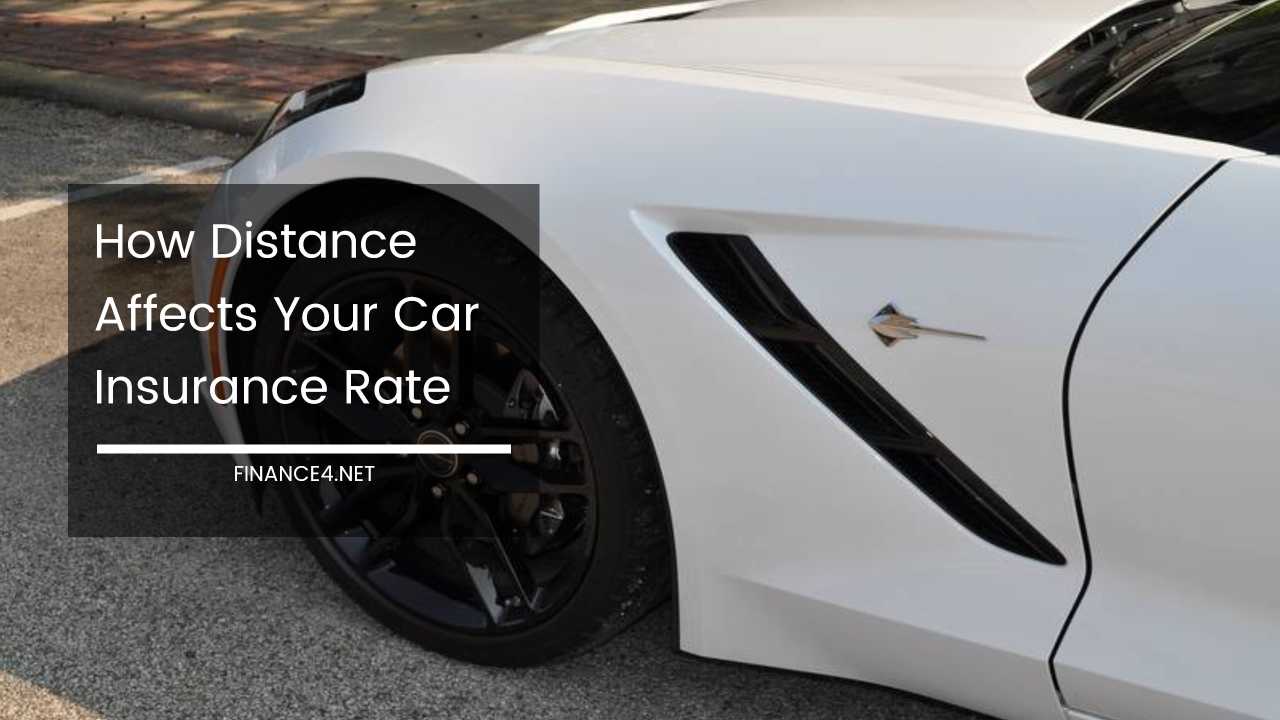How Distance Affects Your Car Insurance Rate

How Distance Affects Your Car Insurance Rate (1400 Words)
The hum of the engine, the steady rhythm of the windshield wipers, the ever-present glow of traffic lights – the daily commute can become a familiar, yet potentially costly, routine.
While the impact on gas, wear and tear, and personal time is readily apparent, many drivers are surprised to learn that the distance they travel can also significantly affect their car insurance rates.
Unveiling the Hidden Cost: Distance and Insurance Premiums
Insurance companies are risk assessors at heart. They meticulously analyze a multitude of factors to determine your car insurance premium, including your driving record, age, gender, car type, credit score, and even the information of anyone else listed on the policy.
Finding the most affordable coverage involves a strategic balancing act with these variables. This might mean increasing deductibles, reducing coverage levels, or taking other steps that might not be ideal for everyone.
To create a risk profile, insurance companies utilize complex algorithms that churn through your personal data.
Positive factors like being married, having a clean driving record, and a good credit score can offset negative ones like being a young driver, having a sports car, or being male. While the specific weightings may vary slightly, most major insurers utilize a similar pool of variables.
Distance as a Mile Marker on the Risk Road
Beyond these standard factors, car insurance companies also delve into your location and estimated daily driving habits, including your commute.
Most companies ask for an estimated annual mileage, driven by the logic that those who spend less time on the road are statistically less likely to be involved in accidents. Consequently, drivers who log high miles typically pay higher premiums to compensate for the perceived increased risk.
Some insurers take things a step further by factoring in proximity to high-risk roads. If you live near a notorious stretch of highway with a history of accidents, your insurance company might take that into account when calculating your rate.
Not all companies have access to such granular details, but many do. For those that lack this level of specificity, your zip code might be used as a proxy. If your zip code encompasses a dangerous highway, the accident statistics for that area could influence your premium, even if you never use the road yourself.
The questions insurance companies ask may go beyond just mileage. They might inquire about your rush-hour driving habits. Being surrounded by a sea of impatient drivers during rush hour translates to higher risk in the eyes of insurance companies.
Even avoiding evening commutes might not save you from the penalty. Drivers who are on the road late at night, like food delivery drivers or entertainers, share the roads with a higher percentage of potentially intoxicated drivers, raising the risk factor for everyone.
Taking the Wheel on Reducing Costs
While altering driving habits isn’t always an option for everyone, some might have the flexibility to take public transportation, carpool, or even consider relocating closer to work.
Recognizing the link between distance and insurance premiums is the first step. The next step is determining what actions, if any, can be taken to potentially reduce your costs.
Beyond the Commute: Exploring Additional Options
- Pay-Per-Mile Insurance: This relatively new option allows drivers to pay based on the actual miles driven, potentially saving money for those with low mileage commutes. However, keep in mind that some plans might have limitations on total annual mileage or restrictions on driving habits.
- Discounts: Many insurance companies offer a plethora of discounts for low-mileage drivers, good students, taking defensive driving courses, maintaining multiple policies with the same company, and even owning certain safety features on your car. It’s always a good idea to inquire about available discounts when shopping for car insurance. Some common discounts include:
- Low Mileage Discount: Rewarding drivers who drive less with lower premiums.
- Good Student Discount: Recognizing the statistically safer driving habits of young drivers with good academic records.
- Defensive Driving Course Discount: Encouraging safer driving habits through participation in approved defensive driving courses.
- Multi-Policy Discount: Offering a discount for bundling your car insurance with other policies like home or renters insurance with the same company.
- Safety Feature Discount: Recognizing the potential for reduced accidents with features like anti-lock brakes, airbags, and automatic emergency braking.
- Safe Driving Monitoring Programs: Some insurers offer reduced rates to drivers who opt-in to programs that monitor driving behavior. These programs often utilize telematics technology to track factors like speed, braking patterns, and phone usage while driving. Careful driving habits can lead to significant savings with these programs.
The Final Destination: Informed Decisions and Savings
Understanding how distance impacts your car insurance rate empowers you to make informed decisions. By exploring alternative commuting options, considering usage-based insurance, and taking advantage of available discounts, you can potentially lower your car insurance costs and keep more money in your pocket.
Remember a little research and proactive planning can go a long way in saving you money on your car insurance. Here are some additional tips to consider:
- Shop Around and Compare Rates: Don’t settle for the first quote you receive. It’s crucial to get quotes from multiple insurance companies to ensure you’re getting the best possible rate. Many online comparison tools can help you quickly obtain quotes from several insurers.
- Maintain a Clean Driving Record: This is perhaps the most significant factor influencing your car insurance premium. Traffic violations, accidents (even if you’re not at fault), and DUIs can significantly increase your insurance costs. Practicing safe driving habits is essential to keeping your record clean and your rates low.
- Consider Your Coverage Needs: While comprehensive coverage protects your car against various risks, it might not be necessary for older vehicles with a lower market value. Evaluate your car’s worth and your risk tolerance to determine the optimal level of coverage.
- Stay Loyal (But Not Too Loyal): Some insurance companies offer loyalty discounts for staying with them for a certain period. However, it’s still wise to compare rates periodically to ensure you’re not missing out on better deals elsewhere.
Beyond the Car: Additional Factors Affecting Insurance Rates
While distance and driving habits play a significant role, car insurance premiums can also be influenced by factors beyond your control. These include:
- Location: Urban areas with higher traffic congestion and accident rates typically have higher insurance costs compared to rural areas.
- Crime Rates: Areas with higher rates of car theft or vandalism will likely see higher insurance premiums to reflect the increased risk.
- Natural Disasters: Living in a region prone to hurricanes, floods, or earthquakes might lead to higher insurance costs due to the potential for damage.
Final Thoughts: The Road to Savings
By understanding how distance and other factors affect your car insurance rate, you can take proactive steps to potentially lower your costs.
Explore alternative commuting options, consider usage-based insurance, take advantage of available discounts, shop around for the best rates, and maintain a clean driving record.
Remember, a little planning and effort can lead to significant savings on your car insurance, freeing up your hard-earned money for other priorities. So, take control of the wheel and steer yourself towards a more affordable car insurance journey.



